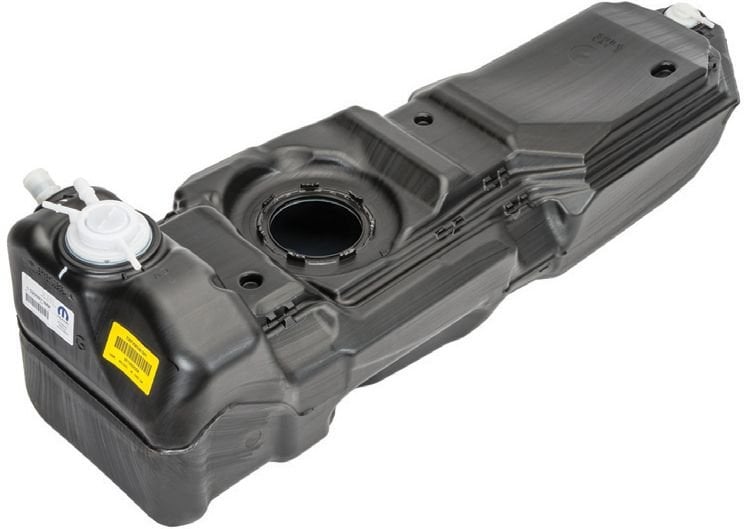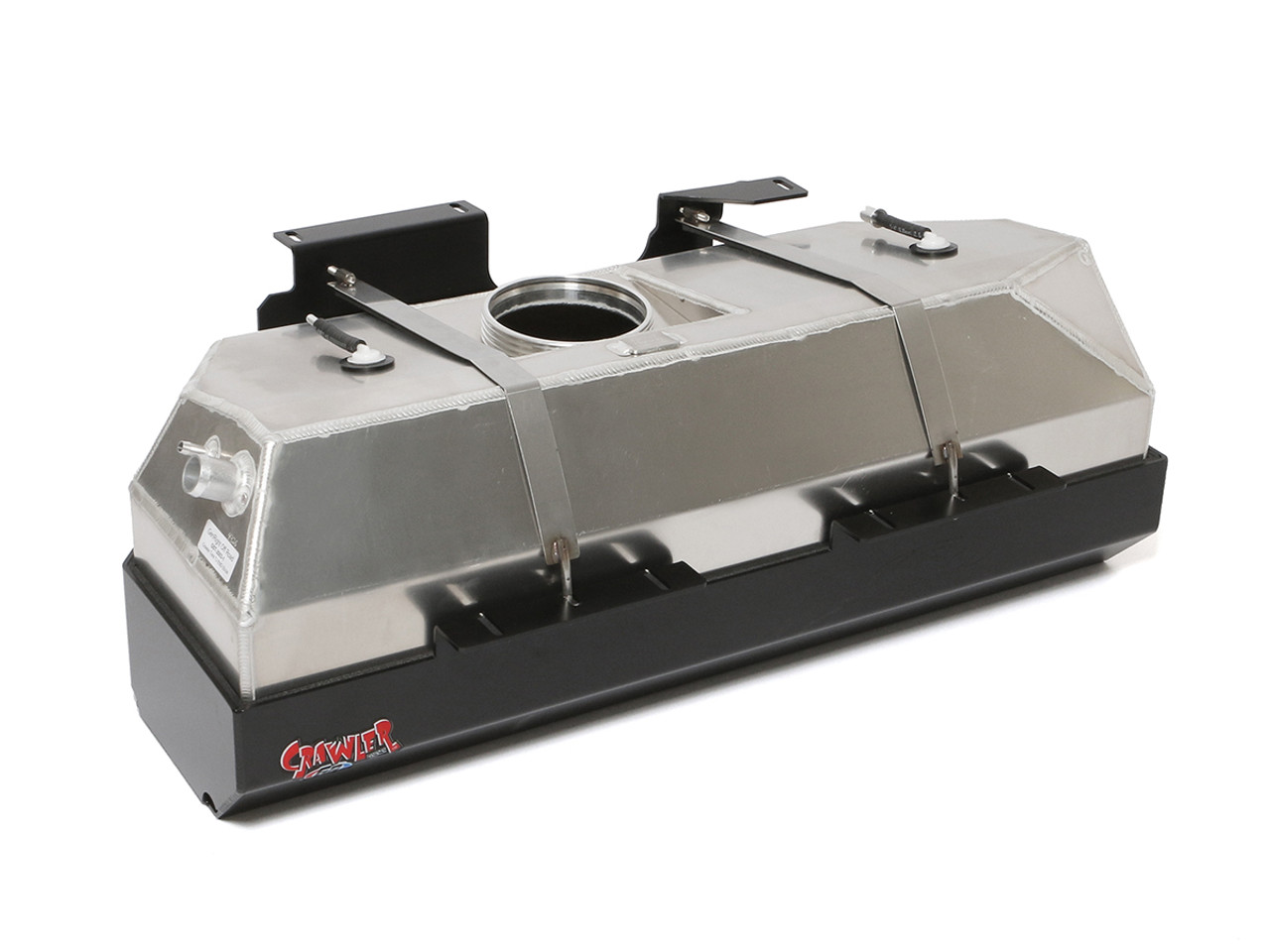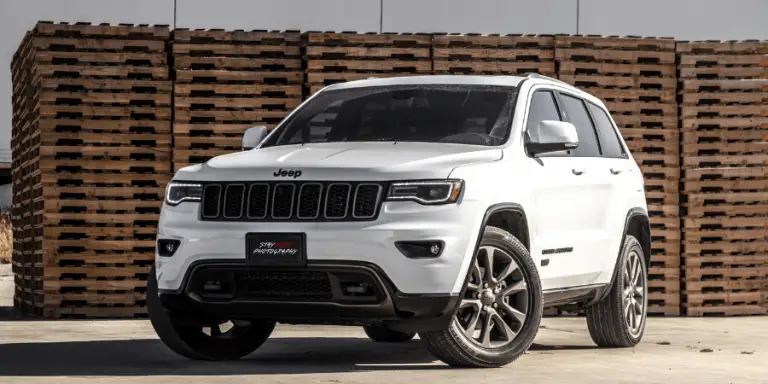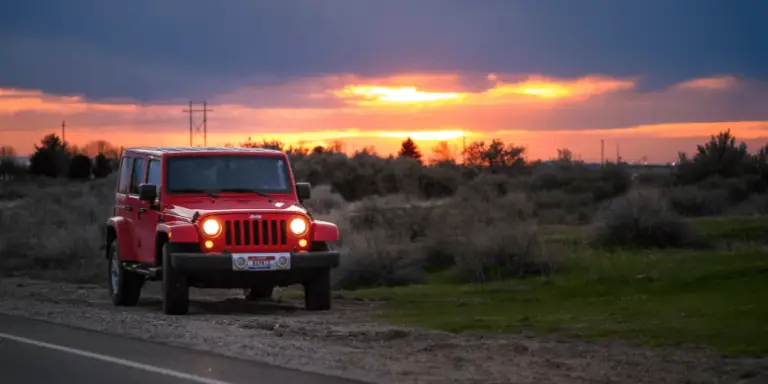Jeep Wrangler Gas Tank Size: 2024 to 2025
The gas tank size for the Jeep Wrangler ranges from 17.5 to 21.5 gallons, depending on the model year from 2002 to 2023. The Jeep Wrangler is a popular off-road vehicle known for its ruggedness and versatility.
One important factor to consider when purchasing a vehicle is the gas tank size, as it determines how far you can travel on a tank of gas before needing to refuel.
For the Jeep Wrangler, the gas tank size varies depending on the model year.
From 2002 to 2023, the gas tank size ranges from 17. 5 gallons to 21. 5 gallons. This allows for longer drives and extended off-road adventures without worrying about running out of fuel.
Whether you are planning a cross-country road trip or exploring remote trails, the Jeep Wrangler’s generous gas tank size provides peace of mind and convenience.
Overview Of Jeep Wrangler Gas Tank Sizes
The gas tank size of the Jeep Wrangler has varied over the years, ranging from 17. 5 gallons to 21. 5 gallons, depending on the model and year.
Gas Tank Sizes For Jeep Wrangler Models From 2002 To 2023:
When it comes to buying a Jeep Wrangler, one important factor to consider is the gas tank size.
A larger gas tank can offer more mileage and convenience, especially if you love going on long trips or off-roading adventures.
In this section, we will provide an overview of the gas tank sizes for Jeep Wrangler models from 2002 to 2023.
Let’s dive in and explore the differences in gas tank sizes between different years and models.
2002 – 2006 Jeep Wrangler Gas Tank Sizes:
- 2002 – 2004 models: These Jeep Wranglers had a gas tank size of 19 gallons.
- 2005 – 2006 models: The gas tank size was increased to 19.5 gallons, providing a slight improvement in fuel capacity.
2007 – 2010 Jeep Wrangler Gas Tank Sizes:
- 2007 – 2010 models: The gas tank size remained the same as the previous years, at 19.5 gallons. No significant changes were made during this period.
2011 – 2018 Jeep Wrangler Gas Tank Sizes:
- 2011 – 2012 models: Jeep increased the gas tank size to 22.5 gallons, offering a significant improvement in fuel capacity.
- 2013 – 2018 models: The gas tank size remained consistent at 22.5 gallons, allowing for longer trips without the need for frequent refueling.
2019 – 2023 Jeep Wrangler Gas Tank Sizes:
- 2019 – present models: The gas tank size was reduced to 21.5 gallons for improved weight distribution and efficiency.
- 2023 models: The gas tank size is expected to remain at 21.5 gallons.
Comparing the gas tank sizes of Jeep Wrangler models from 2002 to 2023, it is clear that Jeep has made adjustments over the years to improve fuel capacity and efficiency.
While some years saw minor changes, others experienced significant upgrades.
Whether you prioritize longer trips or off-road adventures, knowing the gas tank size of the Jeep Wrangler model you’re interested in can help you make an informed decision.

Credit: www.quadratec.com
Factors Affecting Gas Tank Size
The gas tank size of the Jeep Wrangler from 2002 to 2023 ranges from 17. 5 gallons to 21. 5 gallons. These factors vary depending on the year and model of the Jeep Wrangler.
When determining the gas tank size for your Jeep Wrangler, there are several important factors to consider.
These factors can have a significant impact on the size of the gas tank and ultimately affect your driving experience.
Let’s take a closer look at some of these factors:
Considerations When Determining The Gas Tank Size For Jeep Wrangler:
- Fuel Efficiency: One important factor to consider is the fuel efficiency of your Jeep Wrangler. If your vehicle has a higher fuel efficiency, you may not need as large of a gas tank. On the other hand, if your vehicle is not very fuel efficient, a larger gas tank may be necessary to ensure that you have enough fuel for longer trips.
- Off-Roading Capability: Another factor to consider is the off-roading capability of your Jeep Wrangler. If you frequently take your vehicle off-road, you may need a larger gas tank to account for the increased fuel consumption during off-road adventures. Off-roading typically requires more power and can result in reduced fuel efficiency.
- Vehicle Weight: The weight of your Jeep Wrangler can also impact the gas tank size. Heavier vehicles tend to consume more fuel, so if your Jeep Wrangler is loaded with accessories or modifications that increase its weight, you may need a larger gas tank to compensate for the additional fuel consumption.
By taking these factors into account, you can make an informed decision about the gas tank size for your Jeep Wrangler.
Whether you prioritize fuel efficiency, off-roading capability, or have specific weight considerations, finding the right balance will ensure that you have a sufficient fuel supply for your driving needs.
Gas Tank Size Evolution From 2002 To 2023
The gas tank size of the Jeep Wrangler has evolved from 2002 to 2023, with the current size being 21. 5 gallons.
This increase in capacity allows for longer trips without having to stop for fuel.
Over the years, the gas tank size of Jeep Wrangler models has gone through several changes.
This evolution is a result of customer demands and market trends, with the focus being on providing the best possible fuel capacity for drivers.
Let’s take a closer look at the changes in gas tank sizes from 2002 to 2023 for Jeep Wrangler models.
Changes In Gas Tank Sizes Over The Years For Jeep Wrangler Models:
- 2002-2006: During this period, the gas tank size for Jeep Wrangler models ranged from 15.0 gallons to 19.0 gallons. These models were designed to provide a decent fuel capacity for off-road adventures while still maintaining a reasonable size for urban driving.
- 2007-2011: Jeep Wrangler models in this period saw a slight increase in gas tank size, with capacities ranging from 18.6 gallons to 22.5 gallons. The larger tanks allowed for longer trips without frequent refueling, providing convenience for outdoor enthusiasts.
- 2012-2018: Gas tank sizes continued to grow during this period, with capacities ranging from 18.6 gallons to 23.0 gallons. The increase in size came as a response to the demand for an extended range of adventures and improved fuel efficiency.
- 2019-present: In recent years, Jeep Wrangler models have seen gas tank sizes ranging from 18.5 gallons to 21.5 gallons. While the sizes have not increased significantly, manufacturers have focused on optimizing fuel efficiency without compromising the off-road capability that Jeep Wranglers are known for.
These changes in gas tank sizes reflect the continuous effort of Jeep to provide drivers with the right balance of fuel capacity and practicality.
As customer demands and market trends evolve, we can expect further innovations in gas tank sizes for future Jeep Wrangler models.
Gas Tank Size Comparison By Model
The gas tank size of a Jeep Wrangler ranges from 17. 5 gallons to 21. 5 gallons, depending on the model and year from 2002 to 2023.
This comparison can help you determine the fuel capacity of different Jeep Wrangler models.
Breakdown Of Gas Tank Sizes For Jeep Wrangler Models From 2002 To 2023
If you’re shopping for a Jeep Wrangler, one important factor to consider is the gas tank size. After all, the size of the gas tank can impact your driving range and how often you’ll need to stop for fuel.
In this section, we’ll provide a breakdown of gas tank sizes for Jeep Wrangler models from 2002 to 2023, giving you an overview of the different capacities available for each model year.
Let’s dive in:
When comparing gas tank capacities for Jeep Wrangler models, it’s essential to look at the different trims and editions within each model year.
Below, you’ll find a breakdown of the gas tank sizes for specific Jeep Wrangler models:
| Jeep Wrangler (Year) | Gas Tank Size (gallons) |
|---|---|
| 2002 | 17.5 |
| 2003 | 19.0 |
| 2004 | 19.0 |
| 2005 | 15.9 |
| 2006 | 19.0 |
| 2007 | 15.9 |
| 2008 | 18.6 |
| 2009 | 18.6 |
| 2010 | 22.5 |
| 2011 | 22.5 |
| 2012 | 22.5 |
| 2013 | 22.5 |
| 2014 | 18.6 |
| 2015 | 18.6 |
| 2016 | 18.6 |
| 2017 | 18.6 |
| 2018 | 17.5 |
| 2019 | 17.5 |
| 2020 | 17.5 |
| 2021 | 17.5 |
| 2022 | 17.5 |
| 2023 | 17.5 |
Please note that these are just some examples of gas tank sizes for specific Jeep Wrangler models.
It’s important to check the specifications for the specific trim and edition you are interested in to get the most accurate information.
As you can see, the gas tank size for Jeep Wrangler models varies across different model years. Some years feature larger gas tanks, which may be beneficial for those looking for extended driving ranges.
On the other hand, some years have slightly smaller gas tanks, which may require more frequent stops for refueling.
Before making your final decision, it’s crucial to consider your own driving habits and needs. If you frequently take long road trips or venture off-road, a larger gas tank may be more suitable.
However, if you primarily use your Jeep for daily commuting or shorter distances, a smaller gas tank may be perfectly adequate.
Overall, knowing the gas tank size for different Jeep Wrangler models can help you make an informed decision and ensure that you have the right vehicle to meet your specific needs.
Gas Tank Size And Off-Roading Capability
The gas tank size of the Jeep Wrangler ranges from 17. 5 to 21. 5 gallons, allowing for extended off-roading trips without the need for frequent refueling.
With its ample fuel capacity, the Jeep Wrangler ensures a long-lasting and thrilling off-roading experience.
Off-roading enthusiasts understand the importance of having sufficient fuel capacity when venturing into remote terrains.
The gas tank size of a Jeep Wrangler plays a significant role in determining its off-roading range and capability.
In this section, we will explore the influence of gas tank size on the off-roading range of Jeep Wrangler, as well as the considerations for off-road enthusiasts when choosing a Jeep with the ideal gas tank size.
Influence Of Gas Tank Size On The Off-Roading Range Of Jeep Wrangler:
- A larger gas tank size allows for a longer off-roading range without the need for refueling. This is particularly beneficial when exploring remote locations where fuel stations may be scarce.
- With a larger gas tank, you can confidently take on more extended off-roading adventures without worrying about running out of fuel in the middle of nowhere.
- The gas tank size directly affects the number of miles you can cover off-road before needing to refuel. A larger tank will provide a greater range, allowing you to explore more diverse landscapes and enjoy longer off-road journeys.
- It’s essential to consider the fuel efficiency of your Jeep Wrangler as well, as the mileage achieved per gallon can affect the actual off-roading range.
- Keep in mind that a bigger gas tank also adds weight to your vehicle, which may slightly impact its overall performance and maneuverability.
Considerations For Off-Road Enthusiasts When Choosing A Jeep With The Ideal Gas Tank Size:
- Evaluate your typical off-roading adventures and the range you expect to cover. Determine whether you require a larger gas tank for longer excursions or if a standard-sized tank will suffice for your usual off-road activities.
- Research the gas tank sizes available for different Jeep Wrangler models and compare their off-roading ranges. This information will give you an idea of which models align with your anticipated adventures.
- Consider the availability of fuel stations or refill points along your intended off-roading routes. If you plan to explore remote areas with limited options for refueling, opting for a larger gas tank size can provide you with peace of mind.
- Balancing gas tank size with other factors such as payload capacity, vehicle weight, and drivability is crucial. Choose a gas tank size that aligns with your overall off-roading requirements while ensuring it doesn’t hinder other aspects of your Jeep’s performance.
By considering these factors and assessing your specific off-roading needs, you can make an informed decision when choosing a Jeep Wrangler with the ideal gas tank size.
Remember, a properly sized gas tank will enhance your off-roading experience by allowing you to explore further and conquer more challenging terrains without the constant worry of refueling.
Fuel Efficiency And Gas Tank Size
The gas tank size of the Jeep Wrangler from 2002 to 2023 is 21. 5 gallons, ensuring optimal fuel efficiency and longer trips between refills.
Relationship Between Fuel Efficiency And Gas Tank Size:
- A larger gas tank usually means more fuel capacity, which can offer longer driving range without refueling.
- However, a larger gas tank can also increase the weight of the vehicle, potentially impacting fuel efficiency.
- Fuel efficiency refers to how efficiently a vehicle uses fuel to travel a certain distance.
- The size of the gas tank and fuel efficiency are interrelated, and finding the right balance is important for vehicle owners.
Balancing The Need For A Larger Gas Tank With The Impact On Fuel Consumption:
- Having a larger gas tank can benefit those who frequently drive long distances without many gas stations along the way.
- However, a larger gas tank can also lead to increased weight, which can impact fuel consumption.
- It is crucial to consider the weight of the vehicle and the impact it may have on fuel efficiency when deciding on the size of the gas tank.
- Fuel consumption can be affected by various factors such as driving habits, terrain, and vehicle maintenance.
- Opting for a slightly smaller gas tank might be a wiser choice if fuel efficiency is a top priority.
The relationship between fuel efficiency and gas tank size is complex, with benefits and drawbacks to consider.
While a larger gas tank can provide a longer driving range, it can also impact fuel consumption due to increased vehicle weight.
Balancing the need for a larger gas tank with the impact on fuel efficiency is crucial for making an informed decision.
Tips To Maximize Gas Mileage
Maximize your Jeep Wrangler’s gas mileage with these helpful tips.
From maintaining proper tire pressure to avoiding aggressive driving, these strategies can help you make the most out of your Jeep Wrangler’s gas tank size from 2002 to 2023.
Are you looking for practical strategies to enhance fuel efficiency and maximize the usage of your Jeep Wrangler’s gas tank?
We’ve got you covered! Check out these techniques for getting more mileage on a full tank of gas in your Jeep Wrangler:
- Monitor your driving habits: Avoid aggressive acceleration and braking as it can decrease fuel efficiency.
- Keep your tires properly inflated: Underinflated tires can increase fuel consumption, so make sure to regularly check and inflate your tires to the recommended psi.
- Reduce unnecessary weight: Remove any unnecessary items from your Jeep Wrangler to lighten the load and improve gas mileage.
- Plan your trips efficiently: Combine multiple errands into one trip to minimize the distance traveled and maximize fuel efficiency.
- Avoid idling: If you’re going to be parked for more than a minute, turn off your engine to conserve fuel.
- Use cruise control: When appropriate, engage cruise control to maintain a consistent speed and improve fuel efficiency.
- Consider aerodynamic modifications: Explore options like adding a tonneau cover or installing a roof rack fairing to reduce wind resistance and improve gas mileage.
- Regularly maintain your vehicle: Keep up with routine maintenance such as oil changes, air filter replacements, and spark plug checks to ensure optimal fuel efficiency.
- Choose the right fuel: Follow the manufacturer’s recommendations for fuel type and octane rating to optimize your Jeep Wrangler’s performance and fuel efficiency.
- Utilize eco-driving techniques: Practice techniques like gentle acceleration, maintaining a steady speed, and anticipating traffic to maximize fuel efficiency.
By implementing these tips, you can stretch your Jeep Wrangler’s gas mileage and make the most out of every tank, allowing you to enjoy your off-roading adventures even longer.
Future Trends In Gas Tank Size For Jeep Wrangler
The gas tank size for the Jeep Wrangler has varied over the years from 17. 5 gallons in 2002 to 21. 5 gallons in 2023.
These future trends reflect the increasing demand for larger gas tanks to accommodate longer drives and off-road adventures.
As technology continues to advance, it is expected that future Jeep Wrangler models will undergo improvements in their gas tank sizes.
Here are some predictions and expectations for gas tank sizes in future Jeep Wrangler models:
- Increase in gas tank capacity: With advancements in technology and the increasing demand for vehicles with longer driving ranges, it is likely that future Jeep Wranglers will have larger gas tanks. This means that drivers will be able to travel longer distances without the need for frequent refueling.
- Integration of lightweight materials: To counterbalance the increased weight from larger gas tanks, manufacturers may prioritize the use of lightweight materials. This not only enhances fuel efficiency but also allows for better overall vehicle performance.
- Improved fuel economy: Future Jeep Wranglers may be equipped with more fuel-efficient engines and hybrid or electric powertrain options. These advancements can contribute to reduced fuel consumption and help maximize the usage of the available gas tank capacity.
- Enhanced range estimation technology: To provide drivers with accurate information about their remaining fuel levels and driving range, future Jeep Wranglers may feature advanced range estimation technology. This can help drivers plan their trips better and avoid running out of gas unexpectedly.
- Alternative fuel options: As the automotive industry undergoes a transition towards more sustainable and eco-friendly solutions, it is possible that future Jeep Wranglers will offer alternative fuel options such as hydrogen fuel cells or natural gas. These alternatives could potentially affect the gas tank size and overall fuel capacity of the vehicle.
- Modular gas tank configurations: In order to cater to different driving needs and preferences, future Jeep Wranglers may come with modular gas tank configurations. This would allow drivers to customize their gas tank size based on their specific requirements, whether it’s for off-roading adventures or long-distance highway driving.
- Smart fuel management systems: It is likely that future Jeep Wranglers will be equipped with smart fuel management systems that optimize fuel consumption. These systems can provide real-time feedback to drivers, suggesting ways to improve fuel efficiency and make the most out of the available gas tank capacity.
- Increased focus on sustainability: With a growing emphasis on sustainability and reducing carbon emissions, future Jeep Wranglers may prioritize fuel-efficient technologies and alternative fuel options. This could lead to a shift in gas tank sizes and overall fuel capacity to align with these environmental goals.
- Integration of advanced safety features: As vehicles become more autonomous and connected, future Jeep Wranglers may incorporate advanced safety features that require additional space for sensors and systems. This could potentially impact the size and configuration of the gas tank, as manufacturers find ways to accommodate these technological advancements.
- Continued innovation and adaptation: The automotive industry is constantly evolving, and as consumer demands change, so will the gas tank sizes of future Jeep Wranglers. Manufacturers will continue to innovate and adapt to market trends, ensuring that gas tank sizes meet the needs of drivers in terms of range, efficiency, and performance.
As technology progresses and environmental considerations become more prominent, the gas tank sizes of future Jeep Wrangler models are expected to undergo various advancements and changes.
These developments aim to provide drivers with greater fuel efficiency, longer driving ranges, and more sustainable options, while also considering factors such as vehicle performance and safety requirements.
FAQs On Jeep Wrangler Gas Tank Size
What Size Gas Tank Does A 2023 Jeep Wrangler Have?
The 2023 Jeep Wrangler has a gas tank size of 21. 5 gallons.
How Big Is The Gas Tank On Jeep Wrangler?
The gas tank on a Jeep Wrangler has a capacity of 21. 5 gallons.
How Big Is A Jeep TJ Gas Tank?
The gas tank on a Jeep TJ has a capacity of 21. 5 gallons.
What Is The Gas Mileage On A 2023 Jeep Wrangler?
The 2023 Jeep Wrangler has an average gas mileage of around 21. 5 gallons per tank.
Conclusion
The gas tank size of the Jeep Wrangler has evolved over the years, from 2002 to 2023.
It is important to know the exact capacity of the gas tank in order to plan your trips and manage fuel consumption effectively.
The gas tank size of the Jeep Wrangler ranges from 17. 5 gallons to 21. 5 gallons, depending on the model and year.
This allows for a decent fuel range, ensuring you can go the distance without frequent stops at the pump.
Whether you are planning a long road trip or simply need to navigate through daily commutes, understanding the gas tank size of your Jeep Wrangler is crucial.
It allows you the freedom to explore without worrying about running out of fuel.
So, next time you hit the road in your Jeep Wrangler, rest assured knowing that you have ample fuel capacity to keep you going.





